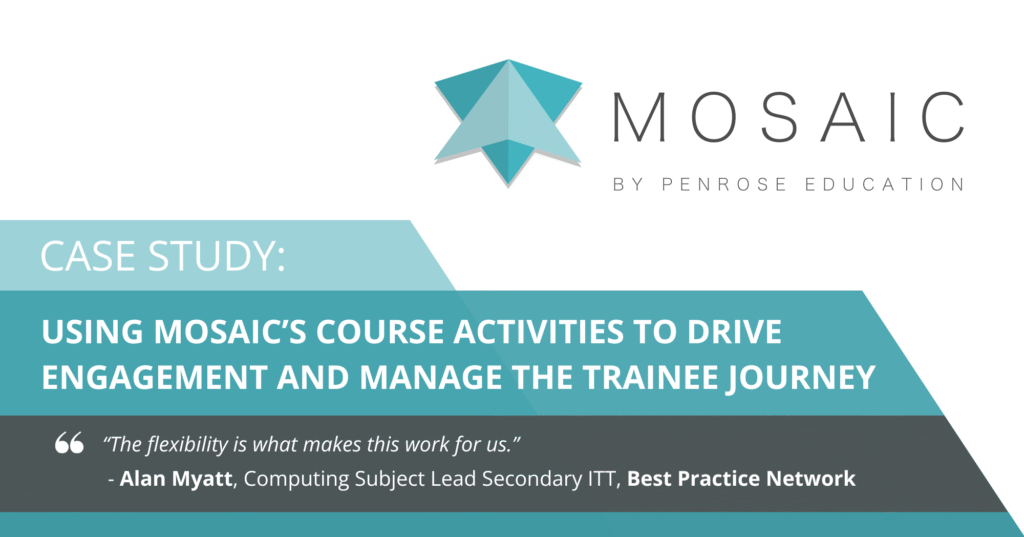
Case Study: Using Mosaic’s Course Activities to Drive Engagement and Manage the Trainee Journey
30th July 2025
Best Practice Network shares how they’re using Mosaic to personalise support, track engagement, reduce admin and help everyone stay on top of weekly to-dos.
At Mosaic, we love highlighting innovative approaches from our partners. In this case study, Alan Myatt, Computing Subject Lead Secondary ITT at Best Practice Network, shares how they are using Mosaic’s Course Activities functionality to reduce duplication, centralise processes and improve oversight across their teacher training provision.
How We’re Using Course Activities at BPN

Alan Myatt
Computing Subject Lead Secondary ITT Best Practice Network
“We’ve used Mosaic for a few years now, but this is our first full cycle of using Course Activities at scale across our secondary teacher training programmes. We needed a more streamlined, centralised way to support things like tutor engagement, independent learning, support plans and absence tracking — and Course Activities has helped us bring all of that into one place.
Rather than relying on OneDrive folders, spreadsheets, and emails, we now have structured activities built directly into the Mosaic platform. That means tutors, mentors, and trainees can all access the right task or document at the right time and we can monitor submissions centrally.”
One Place, Many Purposes
Personalisation and Accountability
“The flexibility is what makes this work for us. Activities can be cohort-wide, subject-specific, or entirely individual. That allows us to respond to personal circumstances without creating confusion or inconsistency.
We embed guidance into the activities, add spaces for trainees to reflect, and enable tutors to add feedback directly. It becomes a living part of their experience, not just another form to fill in. We’ve also kept the language simple and the structure consistent so people don’t get overwhelmed.
For example, in our ITaP units, we ask trainees to reflect on a prompt and upload a document. Their personal tutor can then leave a comment in the same activity. That two-way interaction is built in, which keeps things efficient and meaningful.”
Compliance and Integration Benefits
“One of the biggest wins is how seamlessly Course Activities connect with our apprenticeship processes. With the integrated API, it’s a simple click to send portfolio documents straight from Mosaic to our apprenticeship management software. That’s reduced duplication, saved time, and made things easier for trainees and staff alike.
We also use Course Activities to log absences. Trainees submit absence notifications via a form, and we limit the number of form submissions to keep an eye on repeat absences. While it relies on trainees submitting the form themselves, it gives us a clearer record than we had before.”
What’s Next?
Best Practice Network’s approach shows how Course Activities can flex to support multiple roles, simplify processes and meet the realities of day-to-day programme delivery. The team is continuing to refine its approach — adjusting task design, breaking longer activities into manageable steps, and strengthening quality assurance — to keep things clear, usable and efficient across a large and complex programme. Their model offers a compelling example of how to support progress with transparency without adding to workload.
Want to share your story? Or find out more about Mosaic?
We’d love to hear how you’re using Mosaic! Get in touch to feature your provider in an upcoming spotlight.
Or if you would like to find out more about our work at Mosaic, we would love to speak with you!
